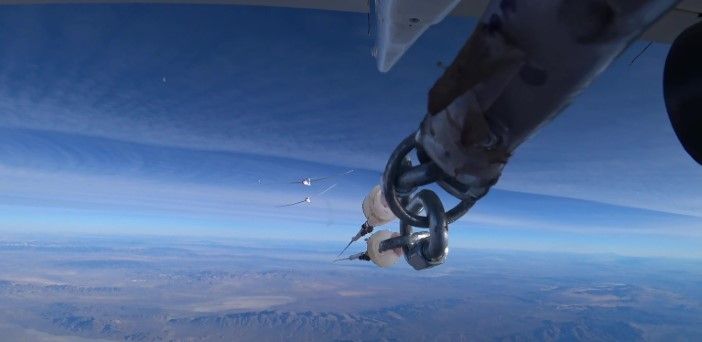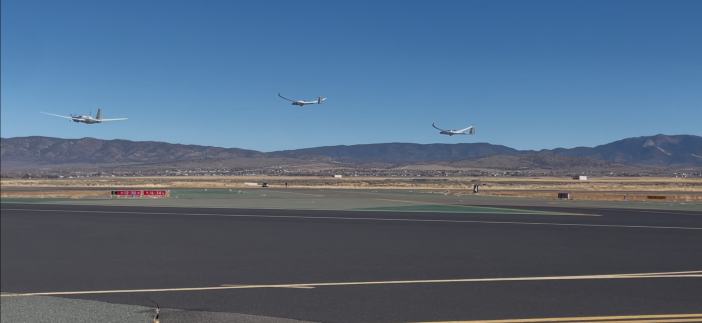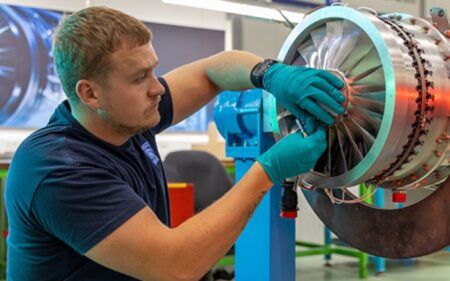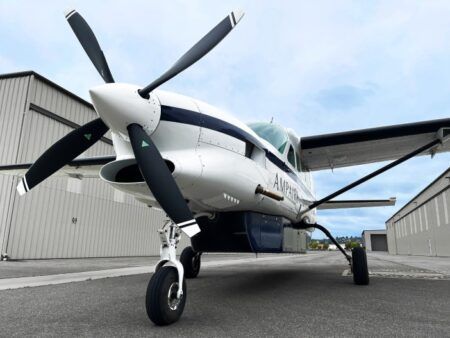Researchers have conducted the world’s first measurements of contrails from a hydrogen-powered turbojet engine during flight, providing new insights into their potential climate impact.
The project between Airbus, the Perlan team and the German Aerospace Center (DLR) has completed the first-ever in-flight measurements of contrails formed by hydrogen combustion. The three-week flight test campaign took place in December 2024 in Minden, Nevada.
DLR instruments collected data on ice crystal formation, trace gases and aerosols in the exhaust plume of a hydrogen-powered aircraft. The measurements will help researchers understand how hydrogen propulsion could reduce aviation’s climate impact beyond carbon dioxide emissions.
“These world-first measurements of condensation trails from a hydrogen-powered aircraft are a major milestone in our quest to gain a complete understanding of the climate compatibility of hydrogen propulsion in aviation,” said Markus Fischer, DLR’s divisional board member for aeronautics.
The Blue Condor mission used a modified Arcus glider equipped with a gaseous hydrogen tank and hydrogen-powered turbojet engine developed by AeroDesignWorks and Germany’s RWTH Aachen University. A second Arcus glider with a conventional kerosene engine provided comparison data.
Both gliders were towed simultaneously by a Grob Egrett high-altitude research aircraft to over 9,000m altitude where contrail formation was predicted. After release, the Blue Condor ignited its hydrogen engine while the DLR-equipped chase plane measured its emissions and contrail properties.
To ensure comparability of the emission data, the respective chase formations were carried out one after the other in quick succession, under the same meteorological conditions. The actual measurement phase lasted around five to ten minutes for each engine.
Four of the seven test flights successfully produced contrails from the hydrogen engine. The tests aimed to measure the microphysical properties of hydrogen combustion contrails under real atmospheric conditions.

(Image: AV Experts LLC)
Contrails from hydrogen engines form differently than those from conventional ones. They develop at higher temperatures and lower altitudes due to increased water vapor emissions and theoretically contain fewer particulate emissions.
Model simulations suggest hydrogen combustion could produce fewer but larger ice crystals, potentially reducing contrail lifetime and warming effects. The comprehensive flight data will help validate these models.
The DLR instruments aboard the Egrett included ice crystal, aerosol and trace gas sensors to detect carbon dioxide, nitrogen oxides and water vapor. All equipment was modified for the unpressurized cabin and operated autonomously with data transmitted via satellite.
“We measured trace gases and aerosols from a long mast at the top of the aircraft, to avoid any interference from the propeller and the Egrett’s own exhaust gases,” said Tina Jurkat-Witschas, project lead at the Institute of Atmospheric Physics.
The data will enable global modeling of the climate impact from potential future fleets of hydrogen-powered aircraft. The Blue Condor project was recognized as a finalist for the National Aeronautic Association’s Collier Trophy.





